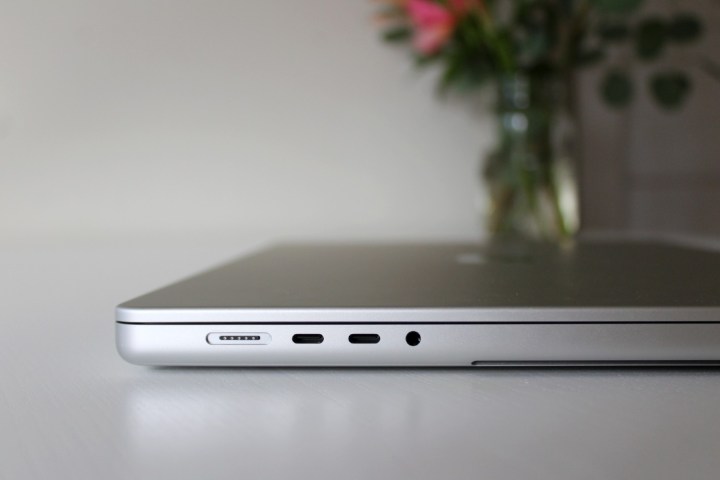Imagine paying for an expensive Mac only to discover you’re not getting full Thunderbolt 4 speeds. That’s what some M1 Mac pro users are reporting after several transfer speed tests.
Howard Oakley from Eclectic Light performed different tests with the 2021 16-inch M1 Max MacBook Pro and a 2022 Mac Studio, also with the M1 Max. He also used a range of external SSDs from both Crucial and Samsung. The tests suggests that although both Macs support Thunderbolt 4, they don’t support the USB 3.1 Gen 2 standard, hindering transfer speeds.

Oakley first determined what the theoretical speeds were by connecting the external SSDs to an Intel iMac Pro and verified that USB 3.1 Gen 2 was supported. For context, USB 3.1 Gen can transfer up to 10 Gb/s. He also ensured that only certified Thunderbolt 4 cables were used.
The actual tests included transferring 160 files ranging in size from 2 MB to 2 GB. As a control, the Intel iMac Pro recorded 470 MB/s read speeds and 480 MB/s write speeds. By contrast, Oakley confirmed that read speeds on M1 Macs ranged between 386 Mb/s and 406 Mb/s while write speeds were between 430-435 MB/s.
Connecting to one of the two ports on the front of the Mac Studio using a Thunderbolt 4 cable produced terrible performance at 20 MB/s reads and 37 MB/s writes.
Here is a summary of the results:
- USB 3.1 Gen 2 storage connected direct to a Thunderbolt port on an M1 Mac was limited to 5 Gb/s, giving read rates of about 400 MB/s and write rates of about 430 MB/s.
- USB 3.1 Gen 2 storage connected to a USB-C port on the front of a Mac Studio Max using a USB-C cable, or via a USB-C port on a Studio Display, operated at 10 Gb/s, with read and write rates of about 500 Mb/s and 490 MB/s.
- USB 3.2 storage connected directly to a Thunderbolt port on an M1 Mac operated at 10 Gb/s, with read and write rates of about 910 Mb/s and 970 MB/s.
- USB 3.1 Gen 2 storage connected to a USB-C port on the front of a Mac Studio Max using a Thunderbolt 4 cable operated at 10 Gb/s, but read and write speeds were lowest of all, at about 20 and 40 MB/s.
At the end, Oakley offers several conclusion and recommendations, one of which is for those with USB 3.1 Gen 2 devices to use Thunderbolt 3 docks or the USB ports on the Studio Display. He also mentions that Apple should have informed people about slower transfer speeds or issued a firmware patch if the slow speeds are due to bugs.
Admittedly, with the exception of the front USB ports on the Mac Studio, the transfer speeds aren’t terrible compared to the actual USB 3.1 Gen 2 spec. However, with customers paying at least $2,000 for a base M1 Pro MacBook Pro and M1 Max Mac Studio, one would hope to get the full Thunderbolt 4 speeds.



